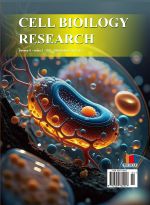Research Progress on the Mechanisms of Drug Resistance in Common Clinical Microorganisms
DOI:
https://doi.org/10.18063/cbr.v6i2.908Keywords:
Microorganisms, Drug resistance mechanism, Antibacterial drugs, Research progressAbstract
The popularity of antibacterial drugs has made microbial drug resistance a thorny problem in global public health. In clinical practice, the phenomenon of resistance to antibacterial drugs by common microorganisms, such as bacteria and fungi, is becoming increasingly common. This article focuses on the main molecular mechanisms by which these microorganisms develop drug resistance. It conducts in-depth analyses from multiple aspects such as changes in drug targets, overexpression by drug efflux pumps, horizontal transfer of drug resistance genes, and biofilm formation. Based on the review of the latest progress in drug resistance research, it explores future research directions. It is hoped that it can provide a practical and feasible theoretical basis for clinical anti-infection treatment and prevention and control of drug resistance.
References
Guan Y, Wang Q, Wu X, et al., 2024, Research Progress on Co-Colonization of Drug-Resistant Bacteria and Its Underlying Mechanisms. Microbiology and Infection, 19(3): 186–192.
Zhang L, Li X, Gao C, et al., 2020, Application Analysis of Bacterial Resistance Monitoring in Clinical Microbiological Testing. Electronic Journal of Clinical Medical Literature, 7(47): 173 + 180.
Sun X, 2024, Analysis of the Effect of Bacterial Resistance Monitoring Methods in Clinical Microbiological Testing. Marriage, Childbearing and Health, 30(5): 52–54.
Yang W, Yang D, 2023, Analysis of Clinical Microbiological Tests and the Detection of Drug Resistance of Various Bacteria to Different Drugs. Modern Diagnosis and Treatment, 34(16): 2380–2383.
Zhang J, Xu H, 2023, Analysis of the Current Clinical Application Status and Mechanism of Action of Antibiotic Drugs. Chinese Journal of Drug Abuse Prevention and Treatment, 29(6): 999–1001 + 1011.
Ma K, Liu H, 2016, Molecular Biological Evidence of Microbial Drug Resistance Evolution and Construction Method of Evolutionary Tree. Gansu Science and Technology Review, 45(3): 76–77 + 44.
Qian W, Chen F, Ji L, 2023, Monitoring and Analysis of Bacterial Drug Resistance in Clinical Microbiological Testing. Systems Medicine, 8(3): 86–89.
Abudureyimu M, Qu T, Dang N, et al., 2018, Analysis of the Clinical Application Value of Clinical Microbiological Testing and Monitoring of Bacterial Resistance. Journal of Clinical Laboratory Science (Electronic Edition), 7(2): 345–346.
Hu J, 2022, Drug Resistance and Its Mechanism of Bacteria Isolated from Atmospheric and Clinical Samples, thesis, Shandong University.
Xi L, Zhang C, 2021, Analysis of Pathogen Drug Resistance in 300 Clinical Microbiological Specimens. Ningxia Medical Journal, 43(10): 951–953.
Wang H, Sun X, Lei Z, Chen H, Wang G, Zhang S, Chen G, Sun Y, 2021, Antibacterial and Drug Resistance Mechanisms of Antimicrobial Peptides Against Pathogenic Microorganisms. China Brewing, 40(8): 8–13.
Wang L, 2021, Research on the Dynamic Effects of Bedaquinoline Exposure on the Resistance Level of Mycobacterium Tuberculosis and Its Resistance Mechanism, thesis, Inner Mongolia Medical University.
Wang H, 2024, Mechanism of Streptomycin in the Prevention and Control of Kiwifruit Canker Disease and Risk Assessment of Drug Resistance, thesis, Northwest A&F University.
Meng L, 2020, It Can Be Used for the Development of Reference Strains for the Detection of Drug Resistance and (Fluorine) Quinolone Resistance Mechanisms, thesis, Northwest A&F University.
Li R, 2020, The Influence of Clinical Microbiological Tests and Drug Resistance Monitoring Results in a Certain Hospital on Rational Drug Use. Anti-infective Pharmacy, 17(3): 360–362.
Chen Y, Yang H, Liu S, et al., 2018, Research Progress on the Resistance Mechanism of Tetracycline Antibiotics. Guangdong Chemical Industry, 45(3): 89–90.
Lin C, Zheng W, 2019, Analysis of the Application Value of Bacterial Resistance Monitoring in Clinical Microbiological Testing. Chinese Journal of Medical Sciences, 9(19): 66–68.
Wu Y, Liu S, Tian Y, et al., 2023, Application Progress of Third-Generation Sequencing Technology in Clinical Microbiological Testing. Medical Equipment, 36(2): 145–149.

